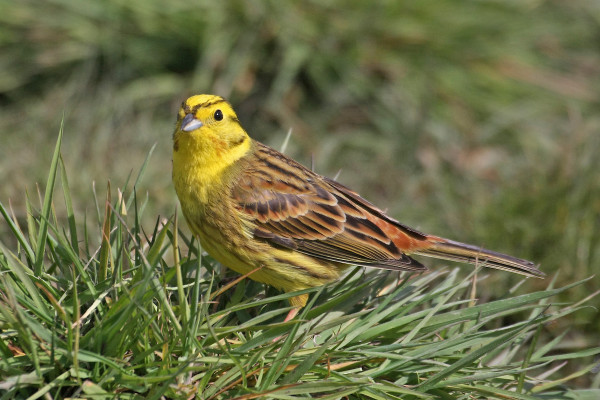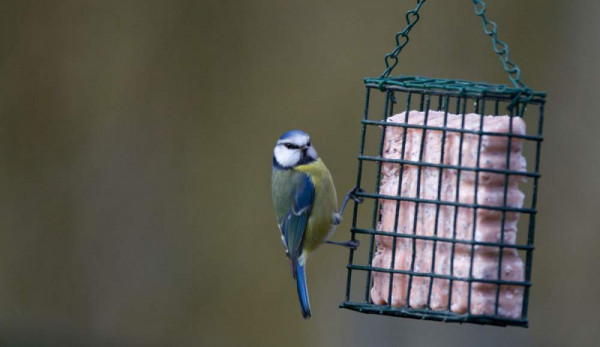
Supplementary bird feeding – a conservation balance
Dr Kate Plummer, Dr Hugh Hanmer and Dr Gavin Siriwardena address the debate on providing supplementary food for birds.
Kate's principal role is to conduct research into avian responses to environmental change, particularly urbanisation. Kate uses BTO’s large-scale citizen science datasets and novel field surveys to address important questions about urban wildlife.
Relates to projects
Bird populations are often limited by the availability of food, especially in seasonal environments. Food supplementation has therefore played a central role in conservation advice and practice across a broad range of contexts in the UK, from putting out garden bird feeders to supporting the reintroduction of Red Kites.
Supplementary food is, in fact, almost ubiquitous across the highly human-modified landscapes of the UK. Across our vast agricultural lands, for example, planting of seed crops and direct seed provision are being used to supplement depleted food supplies for farmland birds. We have good evidence to suggest that this can slow the long-term declines in farmland bird numbers, although its success relies on supplementary foods being supplied effectively to target species when and where natural foods are most limiting.
In our towns and villages, more than half of us provide supplementary food for garden birds. Again, we have strong evidence that this supports winter populations and, indeed, influences the composition of bird communities.
However, supplementary feeding is by no means always positive for conservation. We must think critically about the intended, and unintended, ecological outcomes that arise from altering natural food supplies. So, when is supplementary feeding not a good thing?
In our towns and villages, more than half of us provide supplementary food for garden birds.

Activities that increase the abundance of any species will have a knock-on effect on the balance of co-existing species in the community. It is inevitable, therefore, that any large-scale change in the environment will elicit responses from a wide range of organisms. In other words, food supplementation will benefit the target species (assuming the ecological limits and mechanism involved have been diagnosed correctly), but these impacts do not occur in a vacuum. For example, aggregations of birds around supplementary food will probably attract predators and non-target competitors, may deplete local prey populations and may facilitate the spread of disease organisms. Such effects are likely to develop over time, as the non-target species learn or adapt to the new situation.
Supplementary food may also directly support other, non-target species (such as Grey Squirrels, deer or corvids), detrimentally impacting upon the intended targets as well as having other, unintended negative effects. Even when feeding succeeds in increasing the abundance of target species, these species could equally be competitors or predators of other, vulnerable species that do not use the provided food much, if at all. However, by means of example, there is no evidence that population increases in Great Tits and Blue Tits, common visitors to garden feeders, have directly driven declines at the national scale in the subordinate Marsh Tit or Willow Tit. In fact, when the 'dominant' species have increased in abundance, the 'subordinates' tend to have gone up as well. It is also worth pointing out that whether changes in abundance are considered 'good' or 'bad' is entirely subjective, and a human preference.
Another possible side effect of supplementary feeding is that otherwise declining populations could become entirely dependent upon it. This may then not be sustainable in the long term and withdrawing support without addressing the underlying causes of food shortages could be problematic. Could this be the case, for example, with Bewick’s Swans in the UK and their concentrations at Wildfowl and Wetlands Trust centres, where supplementary food at least has a strong effect on distributions? Despite concerns, there is no evidence to suggest that bird populations have become dependent on garden bird feeders (read more about this, and other consequences of garden bird feeding, in my previous blog post). However, what we provide at garden bird feeders, and elsewhere, is important – poor-quality food can attract birds but fail to provide the resources that they need. For example, experimental research has indicated that the nutritional composition of food supplements can affect health and reproductive success in Blue Tits.

So could feeding be an ecological trap, where birds are attracted but are actually affected negatively overall, or could there be net negative effects at the community level? This is possible, but we can’t generalise. There may well be effects of competition, predation or disease that are apparent locally, but that do not affect whole populations.
Every habitat context and species effect will be different and the overall result depends on the balance between the positive and negative effects within and between species. For example, we have some evidence for possible overall negative effects in some farmland contexts, as found for seed crops in France. However, this does not negate the evidence base for the importance of food resources to maintain populations and to allow them to recover – supplementary feeding interventions are still likely to be critical. Rather, we need to be aware of potential problems, evaluate them and change practices as necessary to address them. This is already happening in the garden context, with squirrel-proof feeders and drives to promote feeder cleanliness. Research into the possible problems with seed crops in farmland is also ongoing. To an extent, this is an 'arms race' against non-target competitors.

We must also remember that supplementary feeding in gardens has been central to public engagement with wildlife over many decades. To many people, bird feeding is one of the easiest and most rewarding ways in which they can engage directly with wildlife during their daily lives. This engagement may have a lifetime influence on attitudes towards the natural world, as well having direct benefits for mental health and wellbeing. Negative consequences of supplementary feeding must be weighed against this positive as well.
The world is dynamic and ever-changing, emphasising the importance of ongoing monitoring and research into the population effects of supplementary feeding. As relationships between food and the organisms that respond to it evolve, the effects will change. They may also interact with the environment; for example, as the climate warms, winter food may be less important, or disappear more quickly due to germination or from fungal contamination. We could conduct targeted studies or experiments in Garden BirdWatch gardens to attempt to disentangle some of these consequences, and data sources such as BTO surveys could also support powerful analyses at the national scale. Such approaches can reveal positive and negative effects of feeding in different habitats, and relationships with predators and competitors, and they will show patterns of change that we cannot yet predict.
Garden Feeding Hygiene
Research analysing Garden Wildlife Health data (published September 2022) strongly suggests that trichomonosis – a parasitic disease of birds – is responsible for the decline of Greenfinch and Chaffinch in the UK.
This disease can be transmitted via infected saliva through contaminated food or water.
Trichomonosis poses no risk to humans or non-avian pets.
We recommend following these practices when feeding birds in your garden:
- Cleaning feeders regularly with soapy water (e.g. weekly)
- Providing fresh drinking water daily
- Rotating position of feeders around the garden (to avoid build-up of food waste)
- Regularly cleaning areas under feeders to remove waste food








Share this page